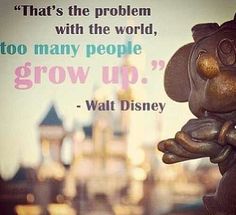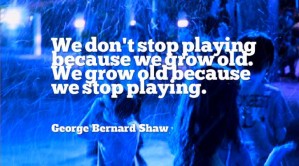 We’ve all been in THOSE meetings where you have either brought in a third party consultant to help out with growing the business through marketing – and they just don’t get you – or perhaps it’s an eager co-worker who likes to show off their wide-ranging vocabulary. It’s the dreaded marketing jargon showdown. The person using the verbiage carelessly goes on and on, when in reality others in the meeting are still back at “hello.”
We’ve all been in THOSE meetings where you have either brought in a third party consultant to help out with growing the business through marketing – and they just don’t get you – or perhaps it’s an eager co-worker who likes to show off their wide-ranging vocabulary. It’s the dreaded marketing jargon showdown. The person using the verbiage carelessly goes on and on, when in reality others in the meeting are still back at “hello.”
A while back, we talked about a few trendy marketing and PR buzzwords that get thrown around a lot when it comes to building a strategy, but what about those nitty gritty terms that have been around for a long time, and will probably stick around?
The most important thing to remember is that no one should feel inferior if they don’t know what these terms mean. PERIOD. It’s probably best to stop the speaker and ask them to clarify, because chances are someone else has the same question (an old adage that has stuck with me as I get older).
Here are a few marketing terms to brush up on before your next meeting!
B2B: Business to Business (B2B) means selling your product or services to other businesses.
B2C: Business to Consumer (B2C) means selling your product or services to the end-user consumers.
Brand loyalty: When a customer keeps coming back to the same brand over and over again in spite of other competitors on the market.
Call-to-action: What you are asking your audience to do (ie. Share a post, like a post, tell your friends, etc.). You should always include a call to action in your outgoing messaging.
CASL: Canadian Anti-Spam Laws were introduced in 2014 to protect people’s email inboxes. In short, you can’t send marketing communications via email unless the receiver has opted in to your list.
Clutter: Similar to when your desk is messy and you can’t find anything, clutter in marketing, or noise, refers to the  amount of other marketing messages you have to break through. There are a lot of brands trying to reach customers on a daily basis, and the challenge is to cut through all of that so you get noticed.
amount of other marketing messages you have to break through. There are a lot of brands trying to reach customers on a daily basis, and the challenge is to cut through all of that so you get noticed.
Customer Relationship Management (CRM): CRM is a system for managing customer and potential customer interactions on a daily basis.
First-Mover Advantage: Being the first to introduce a product into a new market. This allows you to capture a higher market share.
Going Viral: When your message spreads quickly via the internet or other channels. Contrary to what most people think, you can never really have full control over whether your video or message will go viral as it completely depends on how it is received. However, you can coax it along by getting to know what your target audience likes.
Integrated Strategy: Creating an overall strategy that takes into account both traditional and non-traditional (AKA digital) channels to reach the target audience and achieve the overall business goals.
Niche Market: A niche is a subsection of a larger whole. In marketing it’s when you choose to target your efforts to a smaller group with the goal of gaining higher brand loyalty than if you tried to appeal to a larger group.
Personalization: The ultimate form of targeted marketing where a brand creates messages and other content for each individual.
Ubiquity: This can be used in everyday life (and we encourage it…), but in marketing it means that you are trying to be all things to all people. For example, if you are a luxury brand, you are also trying to appeal to the masses, which could affect your brand’s status.
There are many more terms that could be added to this list, but these are the common ones. You should never get bogged down with the lingo. Keep your strategy discussions simple and based on idea generation, while using these terms to highlight the conversation.


 The world of marketing can get confusing. With all of the
The world of marketing can get confusing. With all of the  or B2B) or are you selling to consumers (business to consumer or B2C). Once you decide on that, your next route should be a bit of research to find out more about your
or B2B) or are you selling to consumers (business to consumer or B2C). Once you decide on that, your next route should be a bit of research to find out more about your 
 Spring is in the air, so we thought we’d talk about some of our favourite things at the office… when it comes to marketing campaigns.
Spring is in the air, so we thought we’d talk about some of our favourite things at the office… when it comes to marketing campaigns.

 Disclaimer: This isn’t a weird and twisted “your mom” joke. If you were looking for that, try
Disclaimer: This isn’t a weird and twisted “your mom” joke. If you were looking for that, try 

 How many times have you heard parents talking about how fast their kids grow up, or saying to their kids that they wish they would stop trying to act older than they are? The same goes for start-ups and small businesses. It’s important to hit all of your growth milestones for a number of reasons. First, you want to make sure that what you are doing is scalable; if there are any issues, it’s easier to catch them before it becomes a problem. You also want to make sure that you don’t burn yourself out. Growing too fast without the proper processes and staffing in place can be tough.
How many times have you heard parents talking about how fast their kids grow up, or saying to their kids that they wish they would stop trying to act older than they are? The same goes for start-ups and small businesses. It’s important to hit all of your growth milestones for a number of reasons. First, you want to make sure that what you are doing is scalable; if there are any issues, it’s easier to catch them before it becomes a problem. You also want to make sure that you don’t burn yourself out. Growing too fast without the proper processes and staffing in place can be tough.
 Have you looked at your latest marketing efforts? Really looked? Was it something you just pulled together out of necessity, but it hasn’t really had a lasting impact because you didn’t take into account the overall business strategy? You want to make sure that you don’t look at your marketing strategy as existing in a vacuum. It has to be rooted much deeper than the surface of your business, otherwise it won’t stand up the business you’ve built.
Have you looked at your latest marketing efforts? Really looked? Was it something you just pulled together out of necessity, but it hasn’t really had a lasting impact because you didn’t take into account the overall business strategy? You want to make sure that you don’t look at your marketing strategy as existing in a vacuum. It has to be rooted much deeper than the surface of your business, otherwise it won’t stand up the business you’ve built.
 It’s so easy to get caught up in the nitty gritty details, which means you are probably spending a lot of time and money in those areas when you might not need to. Do you really need to get a new professional headshot? Unless you look incredibly different (ie. Full head of hair vs. none left), then the answer is no. Hire a professional photographer instead at your next event to capture some great shots you may not have thought of to use in a promotional section on your website. Or perhaps not hiring someone to do your headshot means you can better afford to have an event period – maybe it’s a customer appreciation event that will drive business growth.
It’s so easy to get caught up in the nitty gritty details, which means you are probably spending a lot of time and money in those areas when you might not need to. Do you really need to get a new professional headshot? Unless you look incredibly different (ie. Full head of hair vs. none left), then the answer is no. Hire a professional photographer instead at your next event to capture some great shots you may not have thought of to use in a promotional section on your website. Or perhaps not hiring someone to do your headshot means you can better afford to have an event period – maybe it’s a customer appreciation event that will drive business growth.

 At one point or another, every entrepreneur has looked at their budget and felt that “something’s gotta go.” More often than not, they look at the price tag to get a great marketing campaign off the ground and think one of three things:
At one point or another, every entrepreneur has looked at their budget and felt that “something’s gotta go.” More often than not, they look at the price tag to get a great marketing campaign off the ground and think one of three things:
 While noble, for many business owners, there is enough to do without having to worry about posting to Twitter 3 – 10 times per day, or how you are going to get through to that editor or producer so they can showcase your product. Working with an agency that you trust will ensure that your story is being told in the best possible way.
While noble, for many business owners, there is enough to do without having to worry about posting to Twitter 3 – 10 times per day, or how you are going to get through to that editor or producer so they can showcase your product. Working with an agency that you trust will ensure that your story is being told in the best possible way. percentage of what you expect to make in the first year as your launch budget. If you are just looking to refresh your current marketing, the same principal applies. What percentage? Well, that depends on your industry and where you’re at in your journey. You are going to have to do a bit of research, but it shouldn’t take you long to find a ballpark figure.
percentage of what you expect to make in the first year as your launch budget. If you are just looking to refresh your current marketing, the same principal applies. What percentage? Well, that depends on your industry and where you’re at in your journey. You are going to have to do a bit of research, but it shouldn’t take you long to find a ballpark figure. By now, if you haven’t heard the term “content strategy” then you should step out of the shadows and into the light. Loosely defined, content strategy refers to planning, developing, and managing content. Simple right?
By now, if you haven’t heard the term “content strategy” then you should step out of the shadows and into the light. Loosely defined, content strategy refers to planning, developing, and managing content. Simple right? this is always our first point of reference. What’s the point of creating content to put out there if no one will care to read it? Find out what your audience needs/wants before embarking on the content journey.
this is always our first point of reference. What’s the point of creating content to put out there if no one will care to read it? Find out what your audience needs/wants before embarking on the content journey. you said something where you “put your foot in your mouth…” Long list? Short list? Well, regardless, generally when people say things they regret, or that make them look foolish, they are not well-thought out – you winged it and it didn’t come out like you thought it would. Either that, or maybe there have been times where you really don’t know what to say. Flying by the seat of your pants on social media is just as bad. It becomes really easy to go off the rails. Planning first, then execution. Social media is a tool to help you get your message out faster.
you said something where you “put your foot in your mouth…” Long list? Short list? Well, regardless, generally when people say things they regret, or that make them look foolish, they are not well-thought out – you winged it and it didn’t come out like you thought it would. Either that, or maybe there have been times where you really don’t know what to say. Flying by the seat of your pants on social media is just as bad. It becomes really easy to go off the rails. Planning first, then execution. Social media is a tool to help you get your message out faster. doing this?” Just doing a public stunt or event for the sake of doing it because you think it’s cool could mean that you will waste a huge chunk of your marketing budget on something that isn’t going to get you anywhere. For example, if you are a corporate law firm looking to get new clients, you wouldn’t throw a flash mob at the mall (sometimes an exaggerated example gets the point across). Here is where you will set your goals to determine what you want to achieve with this tactic.
doing this?” Just doing a public stunt or event for the sake of doing it because you think it’s cool could mean that you will waste a huge chunk of your marketing budget on something that isn’t going to get you anywhere. For example, if you are a corporate law firm looking to get new clients, you wouldn’t throw a flash mob at the mall (sometimes an exaggerated example gets the point across). Here is where you will set your goals to determine what you want to achieve with this tactic. #3: Come up with a creative concept. Once you have a purpose and goals, it’s time to come up with a concept. What are you going to do to achieve your goals? It’s great to have a look at what some other companies have done, but it’s also important that you make it your own. The last thing you want is the media or your audience online talking about how you copied someone else’s idea. Equally important, your idea should fit your brand identity. You want people to immediately associate the stunt with your brand when they discuss it with their friends. Unless you have the brand awareness of, say Pepsi (and the budget to go along with it), you are going to need to do some legwork to make the connection, so make it easy for yourself.
#3: Come up with a creative concept. Once you have a purpose and goals, it’s time to come up with a concept. What are you going to do to achieve your goals? It’s great to have a look at what some other companies have done, but it’s also important that you make it your own. The last thing you want is the media or your audience online talking about how you copied someone else’s idea. Equally important, your idea should fit your brand identity. You want people to immediately associate the stunt with your brand when they discuss it with their friends. Unless you have the brand awareness of, say Pepsi (and the budget to go along with it), you are going to need to do some legwork to make the connection, so make it easy for yourself. means making a list of everything that has to be done to ensure the success of your stunt – will you have food, refreshments, entertainment, signage, etc. After you have made your list, work backwards from the date you have chosen to create a realistic timeline for when everything will need to get done. Remember that things often take longer than you would expect, and you should always give yourself a buffer time zone. Scheduling things to take place down to the wire is always tough, both on you as well as the vendors you have chosen.
means making a list of everything that has to be done to ensure the success of your stunt – will you have food, refreshments, entertainment, signage, etc. After you have made your list, work backwards from the date you have chosen to create a realistic timeline for when everything will need to get done. Remember that things often take longer than you would expect, and you should always give yourself a buffer time zone. Scheduling things to take place down to the wire is always tough, both on you as well as the vendors you have chosen.
 Before the holidays we talked about
Before the holidays we talked about  buzzwords that you really can’t get away from. In business, cash is king, but in marketing, content is king.
buzzwords that you really can’t get away from. In business, cash is king, but in marketing, content is king.
 Final thoughts.
Final thoughts. It’s one of the first requests I get from clients: “I want to be in the media.” Now, that can mean a lot of things. It can mean:
It’s one of the first requests I get from clients: “I want to be in the media.” Now, that can mean a lot of things. It can mean: out. It’s time to pull from all that work you did when you
out. It’s time to pull from all that work you did when you  Take the opportunity to showcase your knowledge rather than what you do. It is more a “thought leadership” piece (full disclosure: that term is way overused, and I am using it only as a descriptor).
Take the opportunity to showcase your knowledge rather than what you do. It is more a “thought leadership” piece (full disclosure: that term is way overused, and I am using it only as a descriptor). #8: Don’t be boring. Yes, easier said than done. However, if you feel like you are watching paint dry when you are reading through your article, chances are your readers will also feel the same way. Make sure you add a bit of personality in there so readers can get a good sense of where you stand on the topic.
#8: Don’t be boring. Yes, easier said than done. However, if you feel like you are watching paint dry when you are reading through your article, chances are your readers will also feel the same way. Make sure you add a bit of personality in there so readers can get a good sense of where you stand on the topic.